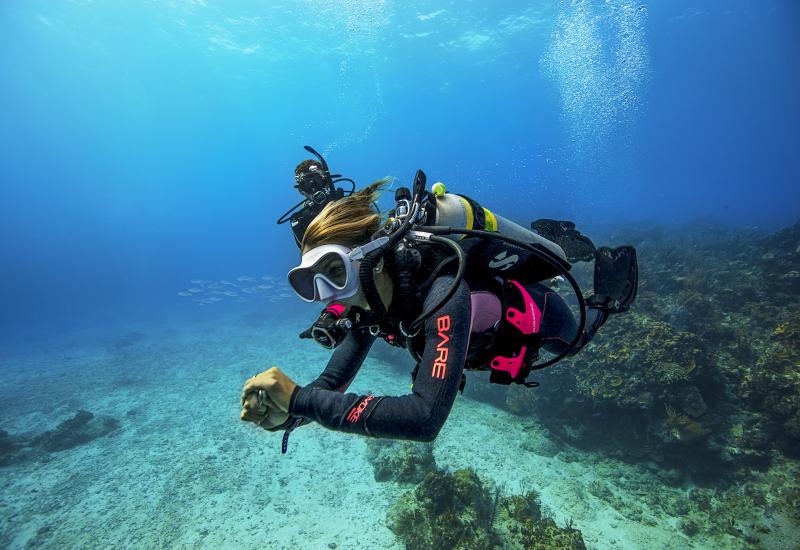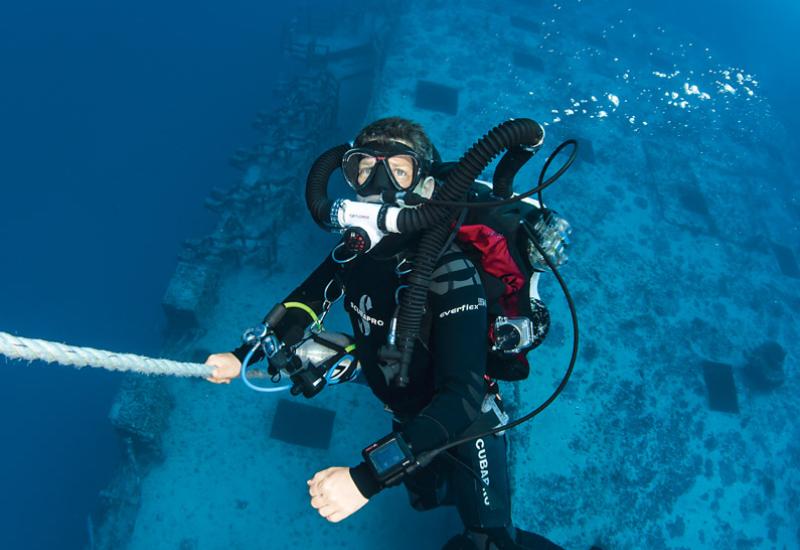Cave Diving: 7 Best Cave Dives
Some say the age of exploration is dead. These people haven’t discovered cave diving. In the beginning, it’s a commitment — to training and gear. The next biggest surprise: Instructors aren’t particularly generous with passing scores — a good thing, given the greater risks.
“It’s the passing that takes time,” says Edd Sorenson, a cave instructor based in North Florida. “Instructors teach you how, but you also need to know the ‘why’ to succeed in the sport.”
Of those who take the plunge to become a cave diver, most find it a small price to pay to feed what quickly becomes a lifelong addiction. These people learn to work in pencil: Their boundaries change daily. Here are some of the world's best cave dives.
Mount Gambier, South Australia
Sunlight hits the bottom of this sinkhole only during summer months.
Blue Lake City, South Australia
The initiation is a leap — or plummet — of faith. The cave, found in the middle of a farmer’s pasture, is called “The Shaft.
“The opening is no bigger than a coffee table,” says Jill Heinerth, technical instructor and cave-diving videographer. To enter, you build a tripod over the hole and fellow divers lower you down via climbing gear and ropes.
“For your christening, they let go of you, and you have no idea how far you’re going to fall,” she laughs.
Ritual completed, cave divers find themselves in a bell-shaped room illuminated by a single peephole. The Shaft, as well as Tank Cave and the rest of the underwater passageways near Blue Lake City in South Australia, all require a heightened set of skills, and not because of ball-busting entry points.
Here the caves aren’t river systems, explains John Vanderleest, national director of the Cave Divers Association of Australia. Water flow is nearly nonexistent: “Water moves through at the rate of an inch an hour.”
“If you kick up silt, it could be there for days,” Heinerth says. Because of this, cave divers trained in this area are pros at anti-silting techniques.
So why make the trip?
“The pattern of Tank Cave mirrors that of the mortar in a brick wall,” Vanderleest says of the 4.5 miles of available routes, with many still awaiting exploration. “I’ve discovered a few small bits [of passageway] simply by sitting down and looking under a rock,” Vanderleest says.
>>When To Go Water remains 59 degrees F year round.
>>Operator The Cave Diving Association of Australia (cavedivers.com.au) matches divers with the qualified instructors who are currently the most active.
>>Price Tag Cave diver cost: $900 to $1,000, depending on the instructor.
Orda Cave, Russia
The ethereal visions are haunting. “We find dragons and angels with wings,” says Bogdana Vashchenko, dive instructor. She’s talking about the white — almost clear — gypsum formations appearing in Orda Cave, located approximately 900 miles west of Moscow. This chalk-like mineral dissolves quickly: The gauzy shapes found one day disappear the next.
The white walls and wispy scenery are just part of the appeal of the world’s largest crystal cave— mapped passageways currently measure three miles. It’s a sanctuary with big rooms stretching more than 250 feet across, and small passageways that will test your ability to ferret through. The biggest hurdle for those not born in the continental tundra is the temperature. Although the water remains 41 degrees F year-round, summer air temps in the 90s free-fall to well below freezing in winter.
One comfort is credited to the cave’s popularity. Back in the ’80s, cave divers had to trek as many as seven hours through the snow to reach the cave. These days, roads, a set of stairs and a crew of eager sherpas ensure that the real adventure begins with the plunge.
>>When to Go Water conditions and temperatures remain the same year-round, save for March, when melting snow can affect viz.
>>Operator Orda Cave (ordacave.com) acts as a dive travel company that arranges classes, equipment, accommodations and more.
>>Price Tag Prices depend on group size; the three-day introduction to cave class costs $600; note that the cavern class is a prerequisite.
Merritt's Mill Pond, Florida
“People act like they’re sighting Loch Ness,” says Edd Sorenson, owner of Marianna-based Cave Adventurers. He’s talking about out-of-towners unfamiliar with man-made Merritt’s Mill Pond and its population of grass-eating carp lounging on the surface.
If not carp but the idea of cave diving sets your heart aflutter, consider this section of Florida, which features Jackson Blue, Twin Caves, Hole in the Wall and others. The hard, limestone environment consistently delivers good viz; there’s nearly no chance of poor kicking causing a silt-out. Another stress reducer is the whiteness of the caves’ walls: Light is reflected, not absorbed, so the path stays highly illuminated.
“Dark cave systems eat up light, making a $2,000 dive light feel like a $500 one,” says Sorenson, adding that with white walls, the inverse is true. And because a dam, not a river, controls the water flow, water quality is consistent. Elsewhere, heavy rain can reverse the water flow, sending muddy water back into the cave; here this is impossible.
As for those fearing gators, Sorenson laughs. “I’ve lived here 10 years and logged thousands of cave hours and never seen one inside.”
>>When to Go Conditions are consistent and favorable year-round.
>>Operator Sorenson, owner of Cave Adventurers (caveadventurers.com), suggests that divers spread out courses: Changing muscle memory takes time.
>>Price Tag Two-day classes start at $400 apiece. Introduction to cave, cave apprentice and full cave each take approximately two days to learn the skills; adopting them may take longer
Emergence Du Ressel, France
This cave will convert you: Emergence du Ressel offers ideal conditions for diver propulsion vehicles. The main passage forks just beyond the entrance, creating one passage 30 feet deep, and another at 60 feet — and they merge to create a loop. Granted, the entire trip extends 2.5 miles, which explains why only a few skilled souls and their supercharged DPVs can boast completion of the entire trip. Their motto: “Forgive me, father, for I have finned.” This cave is just one reason that France’s Lot and Dordogne areas are considered the best of Europe’s cave diving. Explore a different cave system each day; most measure around seven miles, so you’ll likely quit before the path ahead of you does. Caves here tend to be wide, accommodating scooters and those using back-mounted rigs.
>>When To Go Summer is considered ideal; it’s the dry season with air temperatures in the 90s.
>>Operator Lot Cave Diving Centre (lotcavedivingcentre.com) offers classes and serves as a local concierge, steering you toward dining and accommodations that fit your taste and budget.
>>Price Tag Air, oxygen and helium are kept on site; divers fill their own tanks, so bring your blending certificate. Oxygen costs $0.05 a liter.
Tulum Cenotes, Mexico
“We’ve got huge, massive tunnels you could fly a plane through,” says Kim Davidson, manager of ProTec in Tulum, Mexico— home to the world's most expansive underwater cave network, measuring 7,456 miles at the time of print, and greatest diversity of environments. “Salt water, fresh water, brown caves, yellow caves, red caves,” says Davidson, as if reading from a Dr. Seuss speleology book. Inside, you can find “boulders the size of buses, prehistoric remains of mastodons, and human skeletons.”
The diversity of structure and accessibility makes this region one of the best for newbies and pros alike. Caverns provide a taste of what the sport demands and, for experienced cavers, the vast expanse of land holds the promise of entirely new, undiscovered systems.
Davidson explains that the ongoing land development means more than just more options come dinnertime. “New roads mean new places become easier to reach — you don’t have to hike in anymore.”
For those curious about cave exploration, one place to start is a plane ride over the area’s hundreds of cenotes. The cheaper way is to simply search via Google Earth.
>>When to Go Weather and cave conditions vary little; winter is the best season for community building, given how many North Americans and Europeans flock to the tropical clime.
>>Operator ProTec Dive Center (protecdiving.com) in Tulum has four full-time technical cave instructors.
>>Price Tag ProTec Tulum charges $230 a day for students working toward the Cave Diver rating. Those with only an Open Water card should expect to commit a minimum of eight days to the course.
Alghero, Sardinia
Caves breed odd life: iridescent troglobites and blind salamanders and nearly blind bats. The saltwater caves off Alghero, Sardinia, are no exception: conger eels and lobsters here grow twice as big as those on nearby reefs.
“The animals are so much bigger because they have hundreds of meters of tunnels to shelter (them) properly,” says Federica Bedei, Capo Galera Diving Center manager. Several of these saltwater environments are lined with red coral, endemic to the Mediterranean. Stalactites and stalagmites form the teethlike formations you’d expect to see in a cave, thanks to its freshwater beginnings.
The best part: No cave training is needed.
“The caves felt hard-core,” says photographer Alex Mustard, “but were all within recreational limits.” (A dive guide is required.) Many of the routes cut straight through the mountain and, like tunnels, begin and end at different points.
>>When To Go Dive season extends from April to October; winter conditions are too rough for the safe passage of dive boats.
>>Operator The Capo Galera Diving Center (capogalera.com) offers rooms in its cliffside villa. The dive center offers boat dives and specialty courses, including cavern diver.
>>Price Tag One cave dive costs $60; buy a package, and each dive costs $43.
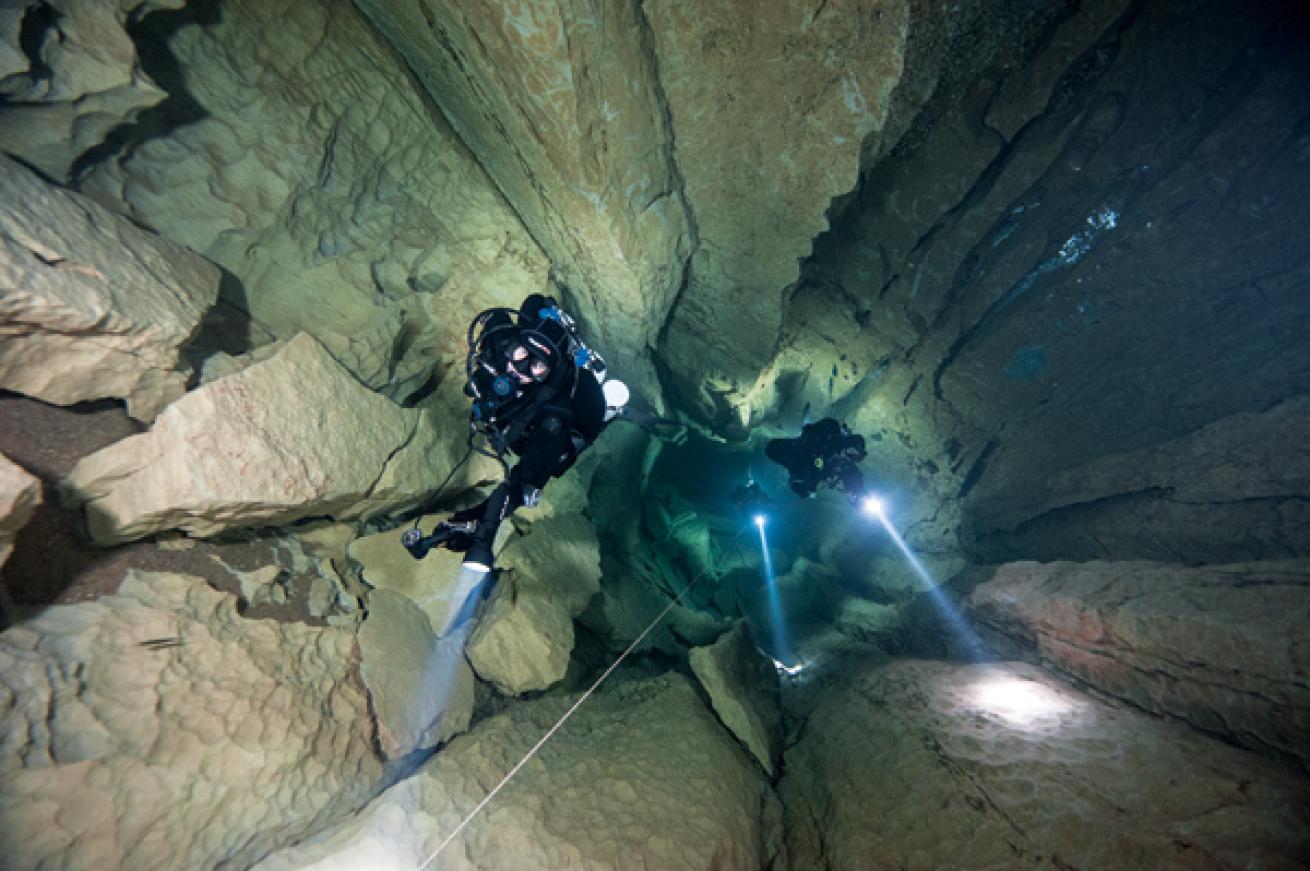
JP BresserInto the Earth: Stake a claim on the last unknown frontier — it lies just beneath our feet.
Some say the age of exploration is dead. These people haven’t discovered cave diving. In the beginning, it’s a commitment — to training and gear. The next biggest surprise: Instructors aren’t particularly generous with passing scores — a good thing, given the greater risks.
“It’s the passing that takes time,” says Edd Sorenson, a cave instructor based in North Florida. “Instructors teach you how, but you also need to know the ‘why’ to succeed in the sport.”
Of those who take the plunge to become a cave diver, most find it a small price to pay to feed what quickly becomes a lifelong addiction. These people learn to work in pencil: Their boundaries change daily. Here are some of the world's best cave dives.
Mount Gambier, South Australia
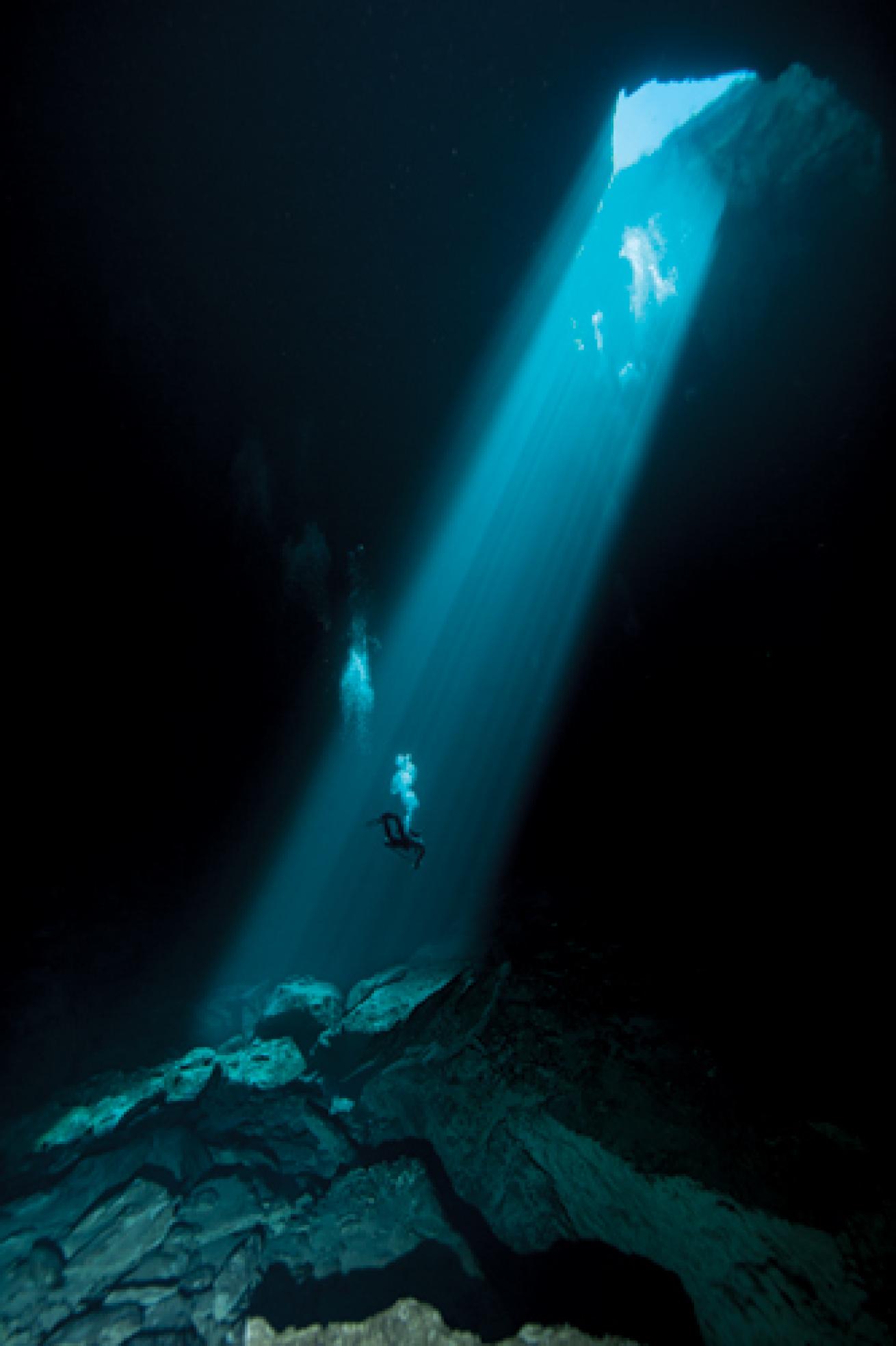
Liz RogersSunlight hits the bottom of this sinkhole only during summer months.
Blue Lake City, South Australia
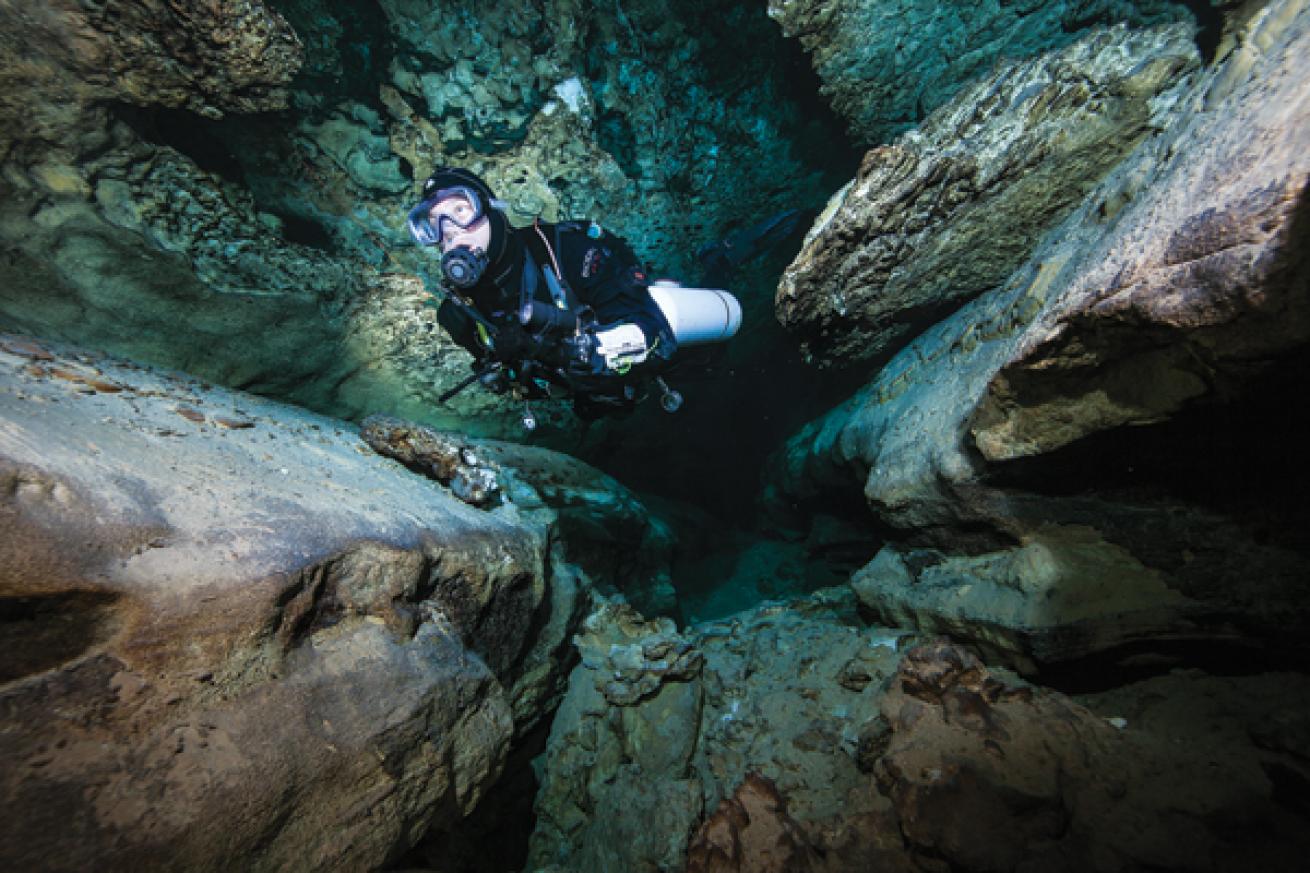
Liz RogersThe initiation is a leap — or plummet — of faith. The cave, found in the middle of a farmer’s pasture, is called “The Shaft.
The initiation is a leap — or plummet — of faith. The cave, found in the middle of a farmer’s pasture, is called “The Shaft.
“The opening is no bigger than a coffee table,” says Jill Heinerth, technical instructor and cave-diving videographer. To enter, you build a tripod over the hole and fellow divers lower you down via climbing gear and ropes.
“For your christening, they let go of you, and you have no idea how far you’re going to fall,” she laughs.
Ritual completed, cave divers find themselves in a bell-shaped room illuminated by a single peephole. The Shaft, as well as Tank Cave and the rest of the underwater passageways near Blue Lake City in South Australia, all require a heightened set of skills, and not because of ball-busting entry points.
Here the caves aren’t river systems, explains John Vanderleest, national director of the Cave Divers Association of Australia. Water flow is nearly nonexistent: “Water moves through at the rate of an inch an hour.”
“If you kick up silt, it could be there for days,” Heinerth says. Because of this, cave divers trained in this area are pros at anti-silting techniques.
So why make the trip?
“The pattern of Tank Cave mirrors that of the mortar in a brick wall,” Vanderleest says of the 4.5 miles of available routes, with many still awaiting exploration. “I’ve discovered a few small bits [of passageway] simply by sitting down and looking under a rock,” Vanderleest says.
>>When To Go Water remains 59 degrees F year round.
>>Operator The Cave Diving Association of Australia (cavedivers.com.au) matches divers with the qualified instructors who are currently the most active.
>>Price Tag Cave diver cost: $900 to $1,000, depending on the instructor.
Orda Cave, Russia
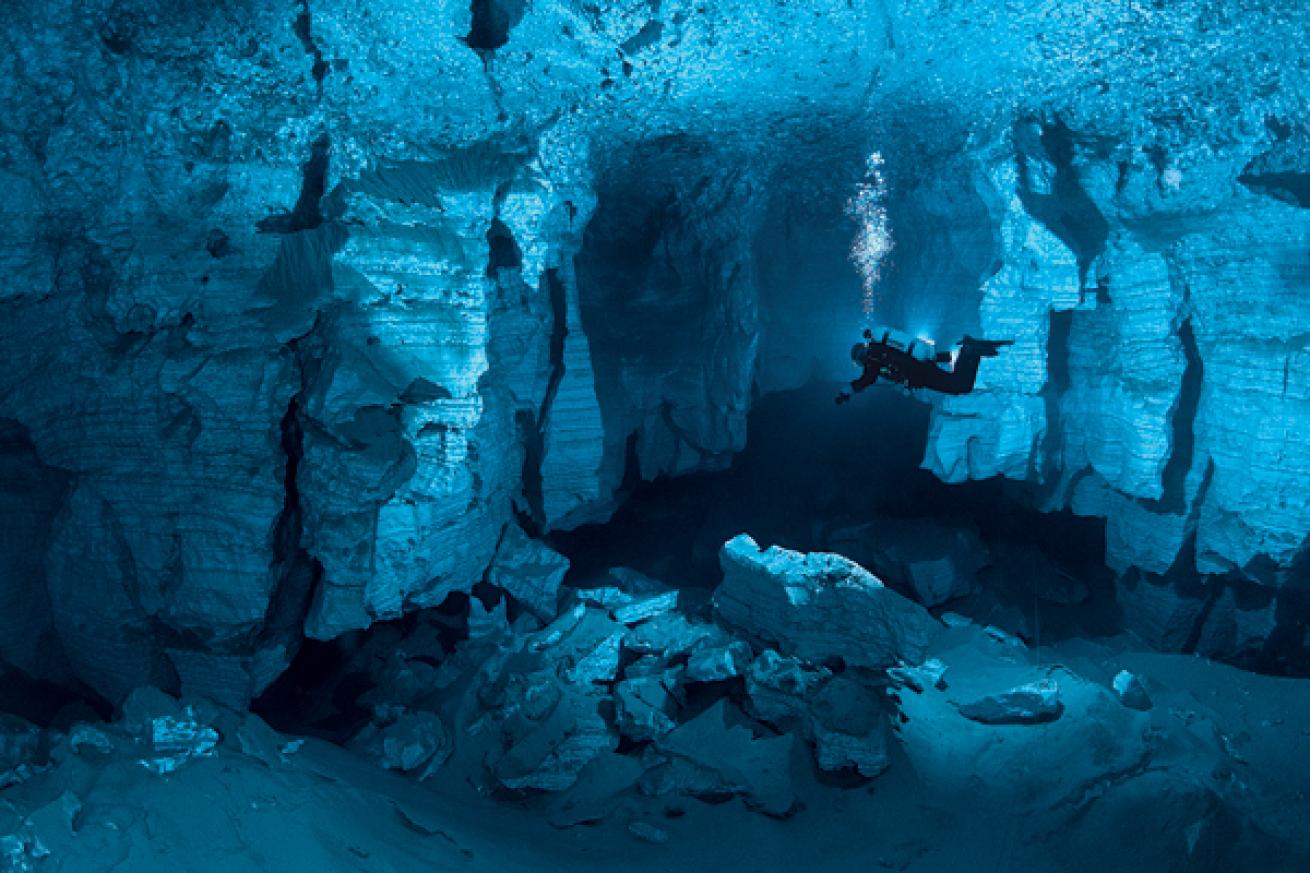
Vitya LyagushkinThe ethereal visions are haunting. “We find dragons and angels with wings,” says Bogdana Vashchenko, dive instructor. She’s talking about the white — almost clear — gypsum formations appearing in Orda Cave, located approximately 900 miles west of Moscow. This chalklike mineral dissolves quickly: The gauzy shapes found one day disappear the next.
The ethereal visions are haunting. “We find dragons and angels with wings,” says Bogdana Vashchenko, dive instructor. She’s talking about the white — almost clear — gypsum formations appearing in Orda Cave, located approximately 900 miles west of Moscow. This chalk-like mineral dissolves quickly: The gauzy shapes found one day disappear the next.
The white walls and wispy scenery are just part of the appeal of the world’s largest crystal cave— mapped passageways currently measure three miles. It’s a sanctuary with big rooms stretching more than 250 feet across, and small passageways that will test your ability to ferret through. The biggest hurdle for those not born in the continental tundra is the temperature. Although the water remains 41 degrees F year-round, summer air temps in the 90s free-fall to well below freezing in winter.
One comfort is credited to the cave’s popularity. Back in the ’80s, cave divers had to trek as many as seven hours through the snow to reach the cave. These days, roads, a set of stairs and a crew of eager sherpas ensure that the real adventure begins with the plunge.
>>When to Go Water conditions and temperatures remain the same year-round, save for March, when melting snow can affect viz.
>>Operator Orda Cave (ordacave.com) acts as a dive travel company that arranges classes, equipment, accommodations and more.
>>Price Tag Prices depend on group size; the three-day introduction to cave class costs $600; note that the cavern class is a prerequisite.
Merritt's Mill Pond, Florida
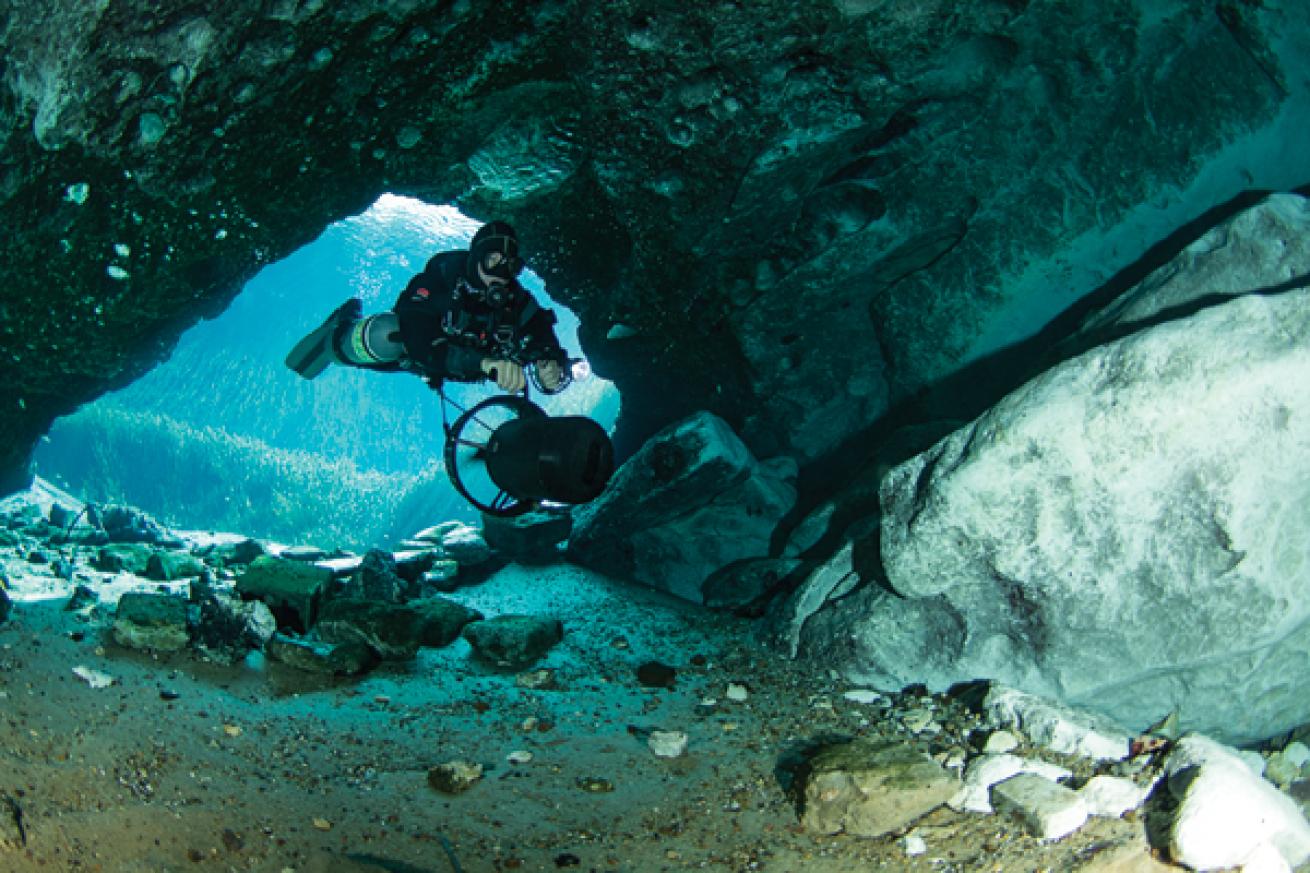
Benjamin Martinez“People act like they’re sighting Loch Ness,” says Edd Sorenson, owner of Marianna-based Cave Adventurers. He’s talking about out-of-towners unfamiliar with man-made Merritt’s Mill Pond and its population of grass-eating carp lounging on the surface.
“People act like they’re sighting Loch Ness,” says Edd Sorenson, owner of Marianna-based Cave Adventurers. He’s talking about out-of-towners unfamiliar with man-made Merritt’s Mill Pond and its population of grass-eating carp lounging on the surface.
If not carp but the idea of cave diving sets your heart aflutter, consider this section of Florida, which features Jackson Blue, Twin Caves, Hole in the Wall and others. The hard, limestone environment consistently delivers good viz; there’s nearly no chance of poor kicking causing a silt-out. Another stress reducer is the whiteness of the caves’ walls: Light is reflected, not absorbed, so the path stays highly illuminated.
“Dark cave systems eat up light, making a $2,000 dive light feel like a $500 one,” says Sorenson, adding that with white walls, the inverse is true. And because a dam, not a river, controls the water flow, water quality is consistent. Elsewhere, heavy rain can reverse the water flow, sending muddy water back into the cave; here this is impossible.
As for those fearing gators, Sorenson laughs. “I’ve lived here 10 years and logged thousands of cave hours and never seen one inside.”
>>When to Go Conditions are consistent and favorable year-round.
>>Operator Sorenson, owner of Cave Adventurers (caveadventurers.com), suggests that divers spread out courses: Changing muscle memory takes time.
>>Price Tag Two-day classes start at $400 apiece. Introduction to cave, cave apprentice and full cave each take approximately two days to learn the skills; adopting them may take longer
Emergence Du Ressel, France
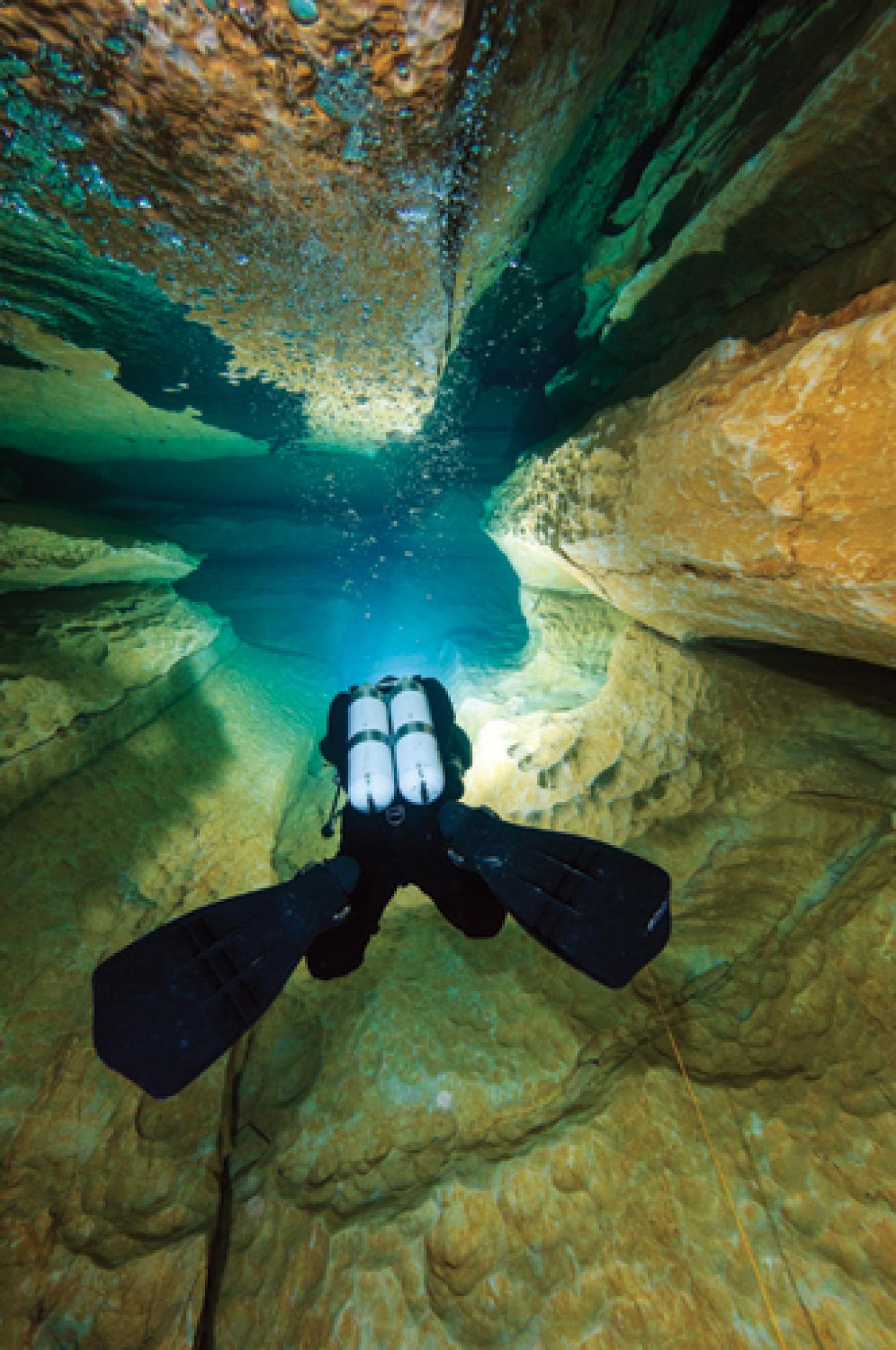
Jason Brown/bardophotographic.comThis cave will convert you: Emergence du Ressel offers ideal conditions for diver propulsion vehicles. The main passage forks just beyond the entrance, creating one passage 30 feet deep, and another at 60 feet — and they merge to create a loop.
This cave will convert you: Emergence du Ressel offers ideal conditions for diver propulsion vehicles. The main passage forks just beyond the entrance, creating one passage 30 feet deep, and another at 60 feet — and they merge to create a loop. Granted, the entire trip extends 2.5 miles, which explains why only a few skilled souls and their supercharged DPVs can boast completion of the entire trip. Their motto: “Forgive me, father, for I have finned.” This cave is just one reason that France’s Lot and Dordogne areas are considered the best of Europe’s cave diving. Explore a different cave system each day; most measure around seven miles, so you’ll likely quit before the path ahead of you does. Caves here tend to be wide, accommodating scooters and those using back-mounted rigs.
>>When To Go Summer is considered ideal; it’s the dry season with air temperatures in the 90s.
>>Operator Lot Cave Diving Centre (lotcavedivingcentre.com) offers classes and serves as a local concierge, steering you toward dining and accommodations that fit your taste and budget.
>>Price Tag Air, oxygen and helium are kept on site; divers fill their own tanks, so bring your blending certificate. Oxygen costs $0.05 a liter.
Tulum Cenotes, Mexico
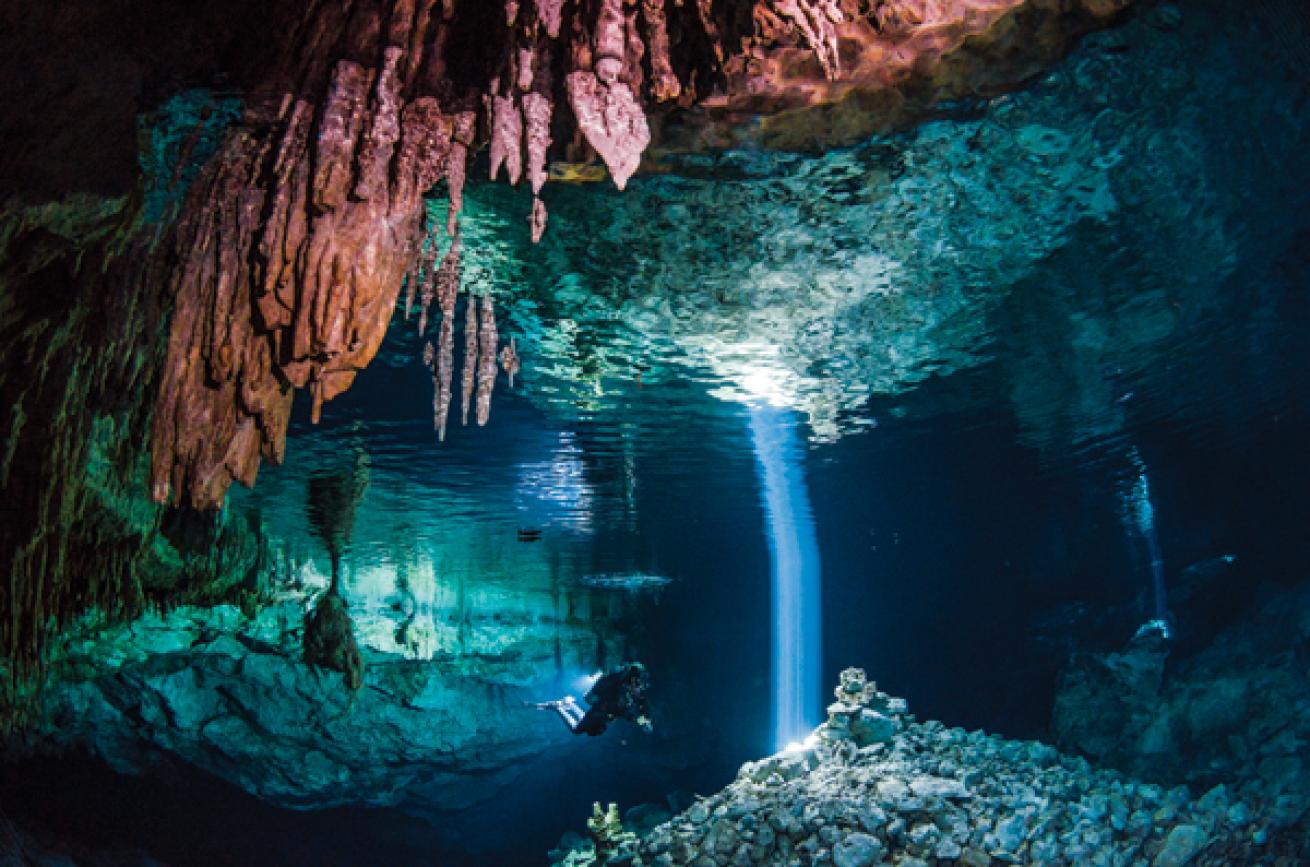
Martin StrmiskaTulum Cenotes, Mexico
“We’ve got huge, massive tunnels you could fly a plane through,” says Kim Davidson, manager of ProTec in Tulum, Mexico— home to the world's most expansive underwater cave network, measuring 7,456 miles at the time of print, and greatest diversity of environments. “Salt water, fresh water, brown caves, yellow caves, red caves,” says Davidson, as if reading from a Dr. Seuss speleology book. Inside, you can find “boulders the size of buses, prehistoric remains of mastodons, and human skeletons.”
The diversity of structure and accessibility makes this region one of the best for newbies and pros alike. Caverns provide a taste of what the sport demands and, for experienced cavers, the vast expanse of land holds the promise of entirely new, undiscovered systems.
Davidson explains that the ongoing land development means more than just more options come dinnertime. “New roads mean new places become easier to reach — you don’t have to hike in anymore.”
For those curious about cave exploration, one place to start is a plane ride over the area’s hundreds of cenotes. The cheaper way is to simply search via Google Earth.
>>When to Go Weather and cave conditions vary little; winter is the best season for community building, given how many North Americans and Europeans flock to the tropical clime.
>>Operator ProTec Dive Center (protecdiving.com) in Tulum has four full-time technical cave instructors.
>>Price Tag ProTec Tulum charges $230 a day for students working toward the Cave Diver rating. Those with only an Open Water card should expect to commit a minimum of eight days to the course.
Alghero, Sardinia
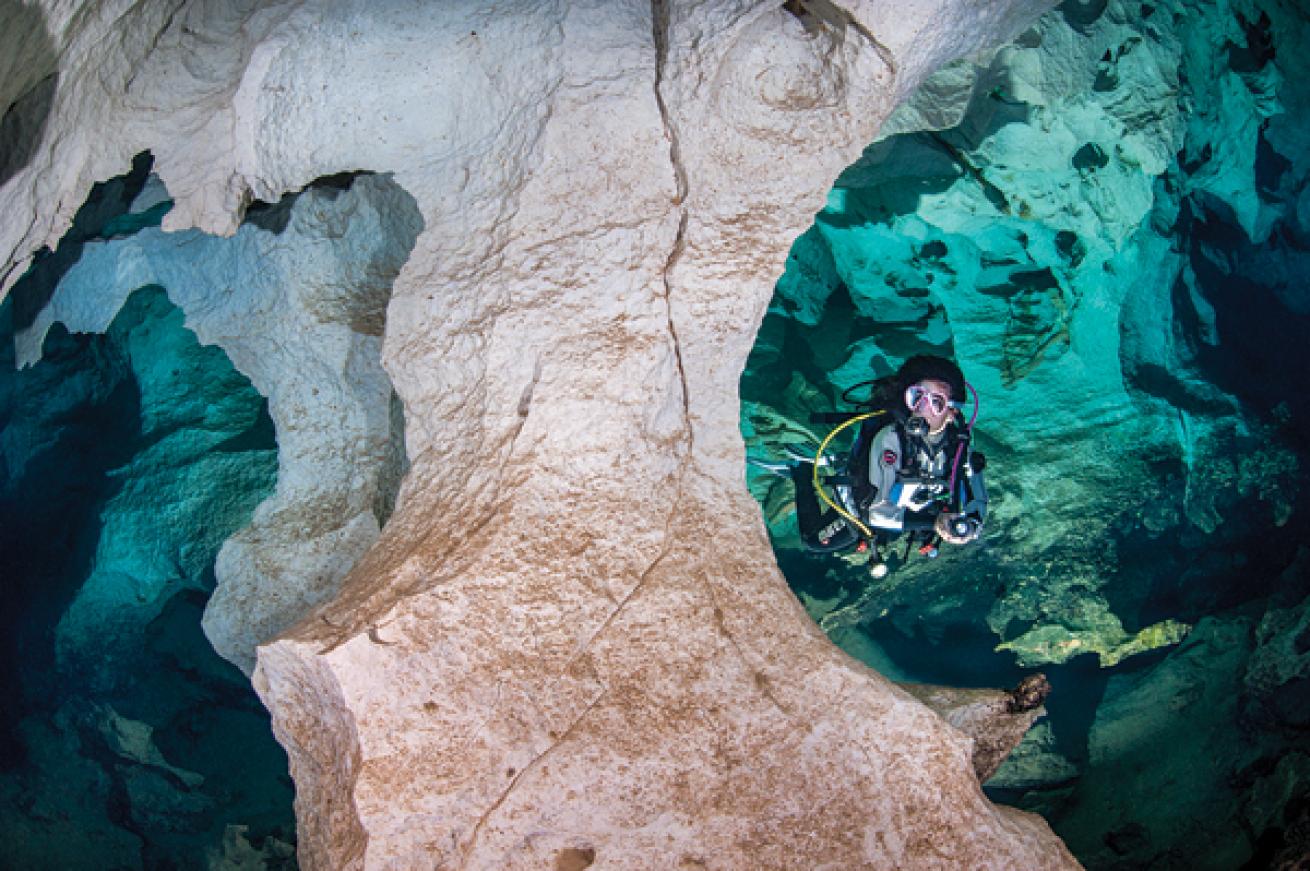
Alex MustardAlghero, Sardinia
Caves breed odd life: iridescent troglobites and blind salamanders and nearly blind bats. The saltwater caves off Alghero, Sardinia, are no exception: conger eels and lobsters here grow twice as big as those on nearby reefs.
“The animals are so much bigger because they have hundreds of meters of tunnels to shelter (them) properly,” says Federica Bedei, Capo Galera Diving Center manager. Several of these saltwater environments are lined with red coral, endemic to the Mediterranean. Stalactites and stalagmites form the teethlike formations you’d expect to see in a cave, thanks to its freshwater beginnings.
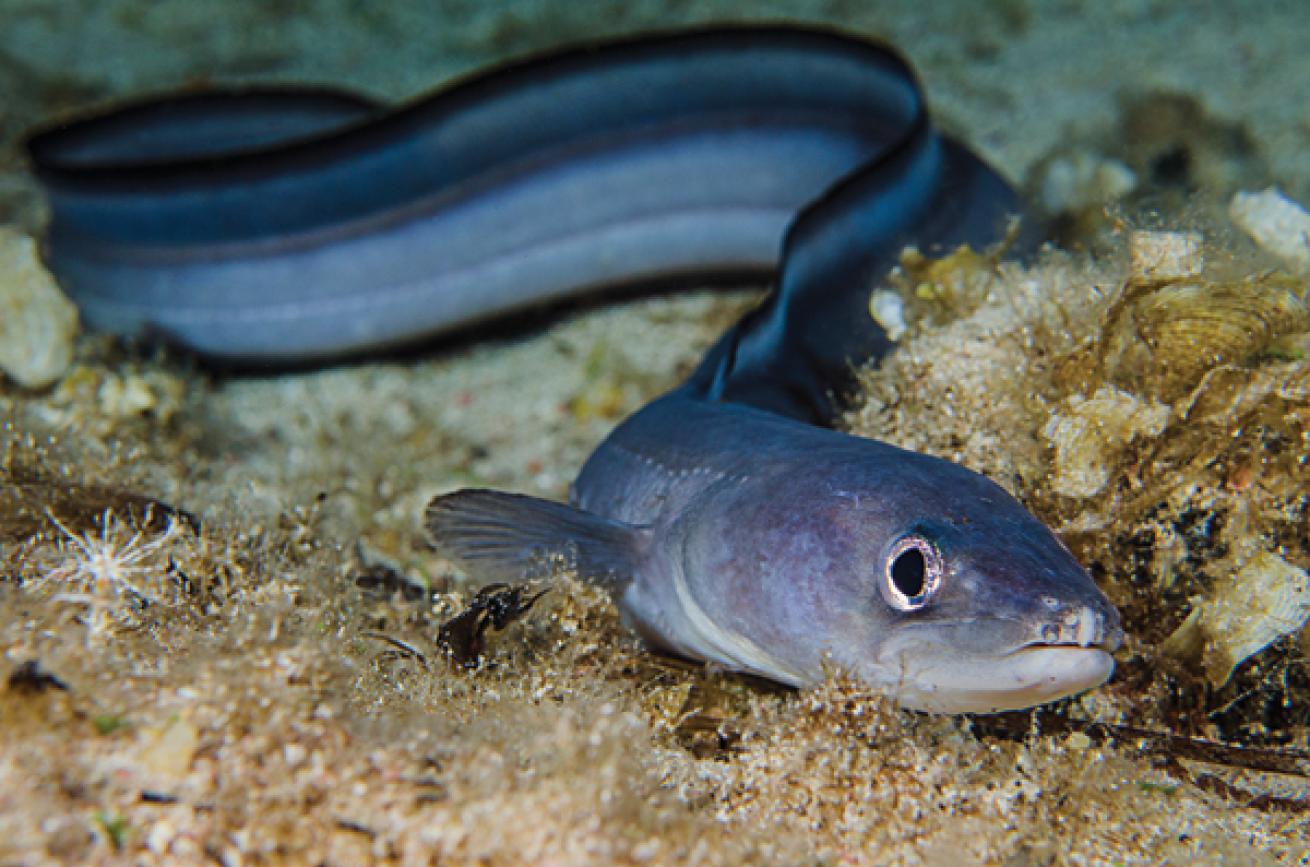
Alex MustardConger eels are just one of the sights you'll find inside a cave.
The best part: No cave training is needed.
“The caves felt hard-core,” says photographer Alex Mustard, “but were all within recreational limits.” (A dive guide is required.) Many of the routes cut straight through the mountain and, like tunnels, begin and end at different points.
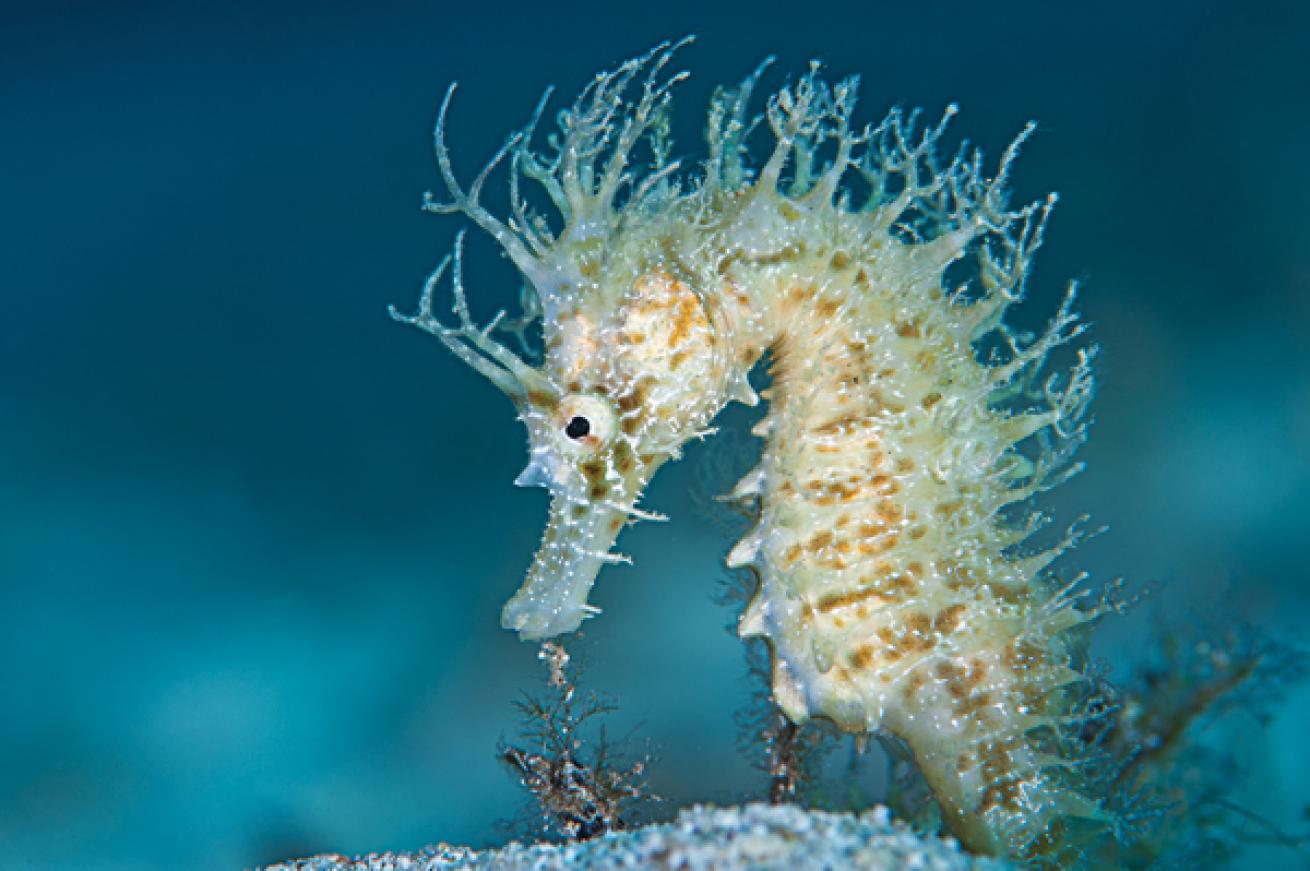
Alex MustardSpiny seahorse? Yep, you can find them in a cave system.
>>When To Go Dive season extends from April to October; winter conditions are too rough for the safe passage of dive boats.
>>Operator The Capo Galera Diving Center (capogalera.com) offers rooms in its cliffside villa. The dive center offers boat dives and specialty courses, including cavern diver.
>>Price Tag One cave dive costs $60; buy a package, and each dive costs $43.
DID YOU KNOW …

